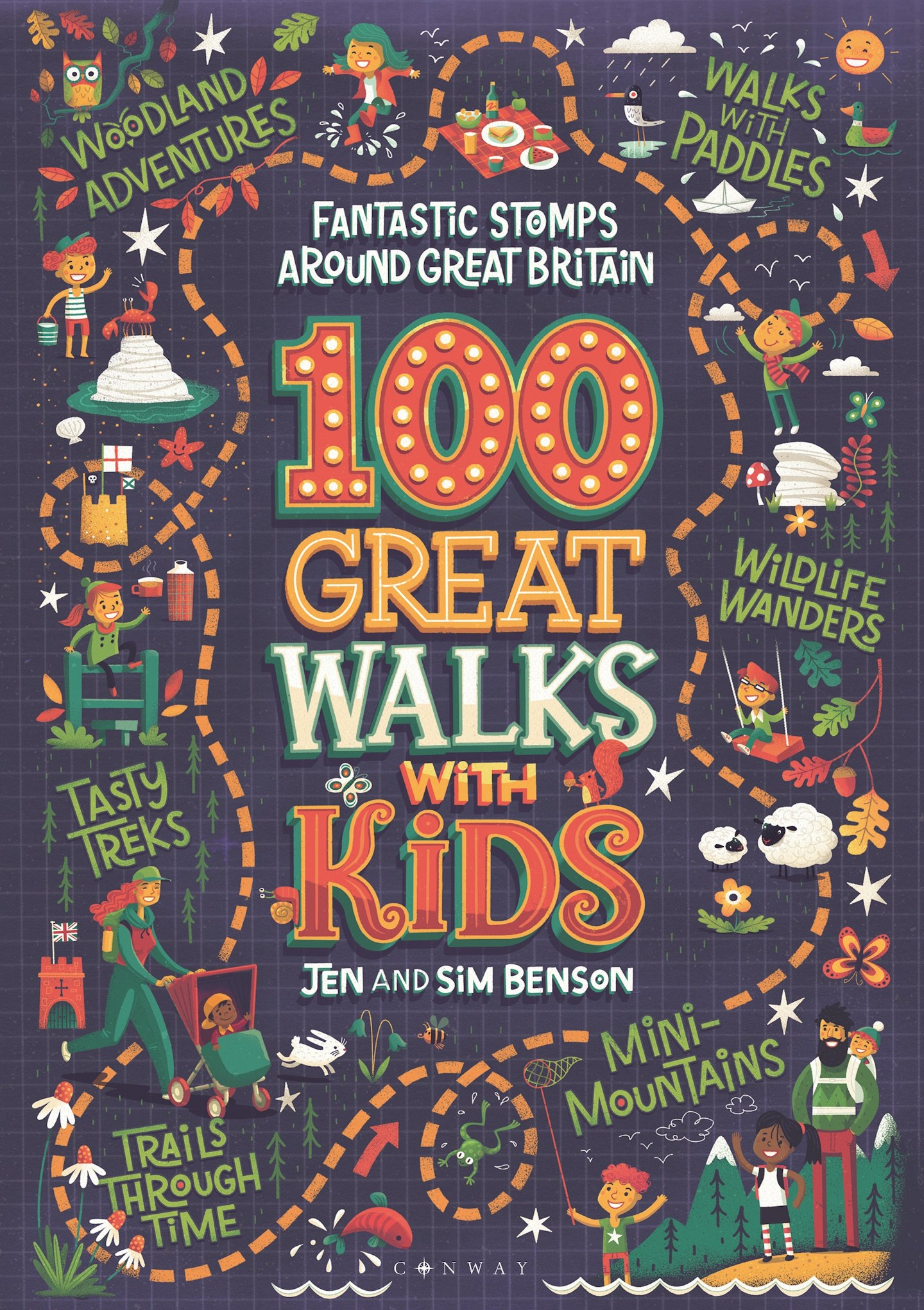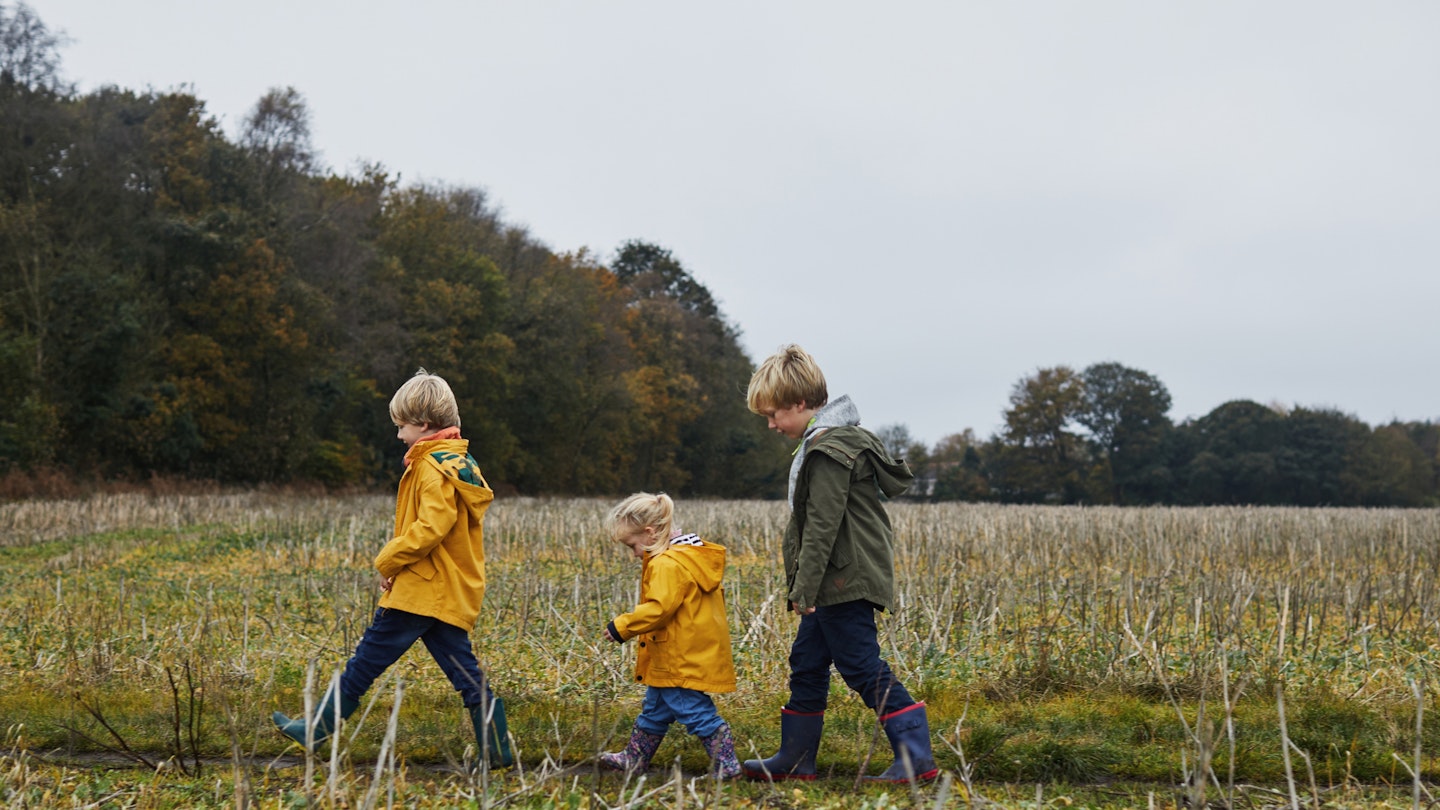I sometimes wonder if there’s something magic about our front door. It doesn’t look special – on the contrary, it’s a 1950s classic with an aluminium frame with leaf-patterned privacy glass – and yet, no matter how much of a battle it has been convincing the kids it would be fun to go for a walk, the moment we all step through that door a transformation takes place. In that instant, the sullenness, lead-like lethargy, and argumentative voices vanish, literally, into fresh air. Within two paces the children break into a run, their smiling faces upturned to the sky, the wind in their hair, and the sounds and sights of nature everywhere around them.
So perhaps, after all, it is not the door itself but the great outdoors beyond that holds the magic. The reward for overcoming all that initial resistance – and, in winter, the lengthy process of getting everyone dressed – is the world outside, brimming with endless possibilities, filled with exciting places to explore, and abundant in amazing things to discover.
We have been walking with our kids for the past nine years – first with one and then, a couple of years later, two. We have written a lot about the art of getting children outdoors; and yet it is still, at times, a struggle. Even after that hard-won doorstep mile is behind us, simple things like variations in mood and weather, clothing malfunctions, hunger and thirst can rapidly derail an enjoyable family walk. Like everyone else, we learn as we go, as each stage of our children’s development presents a new set of joys and challenges. But through many hours of being outside together we have developed some tried-and-tested ways to get everyone excited about walking – and to keep them that way.
Pitch it right
Even the most outdoorsy kids are much more likely to be excited about the prospect of an ‘adventure’ rather than a ‘walk’. Unlike adults, kids don’t feel they should go for a walk for reasons such as fresh air or exercise, and neither do they view walking as a legitimate activity in its own right. It is therefore worth having a point to the outing – perhaps a walk to a café and back with older kids, or to the playground with littler ones. Sometimes we’ll head out for a walk after lunch, taking ‘pudding’ with us – a chocolate biscuit works well with our two, currently six and nine – to be nibbled along the way. While we’re careful not to incentivise too often with sugary rewards, associating physical activity with the need for easily accessible energy is surely no bad thing.
Get them involved
From planning the adventure to leading the way as you go, children often enjoy being involved in the logistics of an outing. And knowing they have some control over the day ahead is much more likely to result in a positive and enthusiastic attitude. Younger kids might like to pack a few things in a rucksack to carry with them – snacks, a water bottle and a small toy work well – while older kids may want to help prepare a picnic, plan the route on a map, or choose a point of interest to aim for. We might offer a choice between a walk to a good climbing tree, across the fields to a local farm shop, or down to the canal to watch the boats so they feel it’s their call.

Letting younger children lead the way around waymarked walks – National Trust places are fantastic for these, and many are free to enter even if you’re not a member – is a great way to keep them engaged, while introducing the basics of map reading. Send them off ahead to find the next arrow, or let them follow the route on a smartphone-based mapping app.
Keep it entertaining
We often find a walk divides itself neatly into episodes, like a good mini drama. Following on from the challenges of actually leaving the house, it’s on to the early part of the walk. At this point, everyone’s glad to be outside, legs are fresh, and levels of enthusiasm and energy are high. How long this all lasts depends, among many things, on the age of the children. When ours were babies we could walk all day long, carrying them snug against us in their slings, even breastfeeding on the go. This soon changed once they were mobile. Walking with toddlers requires patience, and half an hour might only take you as far as the end of the road. But the reward is witnessing their delight at each new discovery, and the way they teach us to look – to really look – at the world around us as if it were brand new, just as they do.
Nowadays we can usually walk a good couple of miles before enthusiasm starts to wane. At this point it’s essential to recognize the signs early: slowing down, dragging feet, whining, tearfulness. Step in with a well-timed snack, some words of encouragement, perhaps a short break to sit on a bench or rock and enjoy the scenery. Dealt with quickly, these minor blips can usually be overcome with relative ease, to be repeated as required.
It’s the final stretch that takes the most inventiveness, when everyone’s tired, the novelty of it all has thoroughly worn off, and kids and adults alike are keen to be home. It’s for this reason we like hills – we call them mini mountains for extra adventure points – as walks: the early, energetic miles are all uphill with a clear goal to reach at the top, while the tired ones are gravity-assisted back down again.
While engagement is key in the early miles, we’ve found distraction works best towards the end. Try playing a game – eye spy’s a good one – or telling a story. On recent adventures in cold, wet, and sometimes snowy conditions we have even put on an audiobook to listen to as we walk. We have found this really effective in lifting our collective mood and transporting us to a different time and place entirely – something, with so many limitations on our ability to travel right now, that we all really need.
Jen and Sim Benson are authors of 100 Great Walks with Kids published in paperback by Bloomsbury and available now
To get 25 percent off the book when purchased on Bloomsbury.com use the code JUGGLE25 (expires 6th April 2021, UK only)
